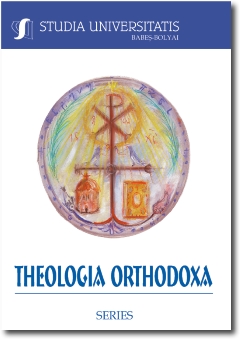CREZUL NICEO-CONSTANTINOPOLITAN ÎN CONTEXTUL DISPUTELOR TEOLOGICE ALE SECOLULUI AL IV-LEA. DOCTRINĂ ŞI TERMINOLOGIE
NICENE-CONSTANTINOPOLITAN CREED IN THE CONTEXT OF THEOLOGICAL DEBATES OF THE FOURTH CENTURY. DOCTRINE AND TERMINOLOGY
Author(s): Ciprian VidicanSubject(s): Christian Theology and Religion
Published by: Studia Universitatis Babes-Bolyai
Keywords: Nicene-Constantinopolitan Creed; Second ecumenical council; terminology; homoousios; homotimos.
Summary/Abstract: Nicene-Constantinopolitan Creed in the Context of Theological Debates of the Fourth Century. Doctrine and Terminology. Christian IVth century actually began in 313, with the tolerance edict placed under the name of Constantine the Great (307-337). Freedom has immediately brought to light differences separating certain ways of thinking from the Orthodoxy. While receiving a solemn formulation in Nicaea, in 325, the teaching of the Son’s equality with the Father was the subject of numerous complaints and debates throughout the century. They will not stop until the Second Synod of Constantinople, convened in 381. Marked by the semi-Arian tradition of the East, it will issue a document whose orthodoxy is correct, but hesitantly expressed, in terms taken from the Scripture, and not assuming the dogmatic progress of the latest debates. Although the council has been criticized for his attitude, starting with St. Gregory Nazianzen, the document signed there has the merit to be the Church creed par excellence, and to have entered deeply into the consciousness of all Orthodox Christians.
Journal: Studia Universitatis Babes-Bolyai - Theologia Orthodoxa
- Issue Year: LV/2010
- Issue No: 2
- Page Range: 147-156
- Page Count: 10
- Language: Romanian

